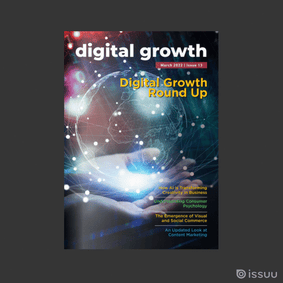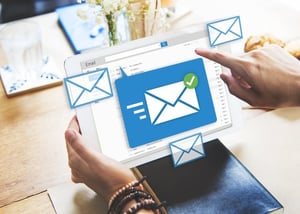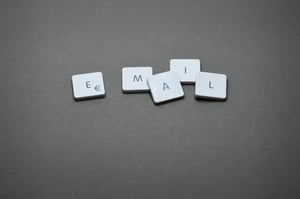Dubai has become one of the world's 'smart cities' of the digital age, and as such, businesses in Dubai have implemented an approach of integrated online marketing. Email marketing has been and continues to be the primary stepping stone to this success.
Email marketing has been the starting point for many online marketing campaigns for businesses in Dubai, as most businesses already have a vast collection of existing or potential customer data. The easiest and most effective way to leverage this data is to directly send each customer or potential customer an email. Before we dive into how to create a successful email campaign, let’s first tackle one of the biggest misconceptions about email marketing.

Email Marketing Thrives in the Digital Age
As the digital age progresses and evolves, there is a common misconception that email marketing is no longer relevant. While we believe that email marketing has most certainly changed over the years, we believe that digital tools have evolved alongside it, making email marketing far from irrelevant. With advanced tracking, creative thinking, and professional strategy, email marketing has the power to convert leads into paying customers.
There's no doubt that email marketing and its role has changed, and therefore when it comes to using this channel to market your business, the right execution is absolutely key to having any chance of success. Here, we run through the best practices businesses should take in order to achieve success through an email campaign.
What Does A Successful Email Campaign Look Like?
Two of the most common metrics of email marketing are the “Delivery Rate” and “Open Rate.” Your delivery rate should be as high as possible and the most effective email marketing campaigns have a 0% non-delivery rate. Often, there are variables that will affect this which are out of your control. These variables include misspelt email addresses, false email accounts, or closed email accounts. Therefore, keeping your non-delivery rates below 5% can also be deemed successful.
Increasing and maintaining the open rate of emails is a lot harder to achieve. Using our best practices will help you reach your target. But before we begin, what is a good open rate to target and what are the numbers to consider when beginning your email marketing strategy?
Targeting between 15% - 25% open rate of your campaign is a positive ratio. Of course, reaching 100% would be ideal but the reality of email marketing is that this percentage is, in many cases, unachievable. You have to consider a variety of factors, for example: not everyone checks their emails daily or even weekly, therefore your email can become buried under many others.
If you take a look at successful metrics of email marketing across the board, you gain a greater idea of how your emails should be performing. Your average click-through rate should be about 2.5% and your average click-to-open rate should be between 20 - 30%. These statistics are a good starting point when you launch your email marketing strategy and monitor its success.
5 Best Practices of Effective Email Marketing
1. Verify Your Database
Too often, verifying your database as an action point is overlooked. In order to ensure your marketing efforts are not in vain, you should have your database verified and tested for false emails, unsubscribed emails or inactive emails. Marketing agencies such as NEXA offer automated tools to verify your data. Verification should be done regularly, and scheduling quarterly or bi-annual reviews are suggested.
2. Timing
There are peak times throughout the day when individuals will access their email accounts. During the working week, the best times to send your mailers are:
- At the start of the day between 7:00 – 8:30
- During lunch hours 12:30 – 14:00
- In Dubai and across the GCC we see a spike in email activity after 21:00 in the evening.
Also, keep in mind the content you are presenting. For example: If your content relates to a lunch promotion, make sure that your campaign goes out during lunchtime. As per above, 11 am - 12 pm would be the optimal time to send out this campaign
3. Consider Your Subject Line
This is the most important of all best practices as the subject header of your email will be the difference between your mail being opened or it going straight into the trash can. We know the saying, "never judge a book by its cover" but unfortunately, that is exactly what happens with email campaigns. Think of the subject line as the “cover of your book.”
The best subject lines are specific to the information within your email, you don’t want to mislead your audience with a subject line that is unrelated to your content. A subject line that grabs the attention of the recipient, and relates to their interests, is enticing and will prompt them to open the email and read the content provided.
Always avoid using retail "buzz words" such as "Free", "Sale" or "Discount" unless you're confident that your recipients want to receive this type of content. Although you may think these words will attract your recipients, this will land your campaign in the trash because most recipients will immediately view your mailer as spam. These subject lines are perceived as spam because we are inundated with communications that overload their content with these particular buzzwords, and most of the time, these communications don’t relate to the interests of the recipient. Not only are these buzzwords perceived as spam by the recipient, many email providers flag these words as spam and your campaign will go straight into a spam folder. Similarly, avoid using any emojis in your subject line as these and the previously mentioned buzzwords often get your emails flagged as spam and won’t reach your end users.
4. Personalize Your Mail
The simple things make a difference. Avoid addressing your recipients with ’Dear All’ or another generalisation. Keep it personal, using the recipient’s name both in the Subject line and in the intro line of text. If you know the recipient's company name, add this too but be sure to keep these inclusions within the context of your email.
5. Create a Strong Call to Action
Always finish your emails off with a ‘Call to Action’, something that will prompt an action from the user. An example of this may be a message to ‘buy now’ or ‘search more’, which may be a click that leads through to your website.
This click-through is the ultimate goal of your email marketing campaign. It gets the user to your website where they can get more information and hopefully, this action ends in a purchase. It's also a great metric to understand the quality of your email campaign with the higher the click-through rate on your website, the higher the quality of your email and call to action.
Time to Get Mailing
If you are interested in learning more about email marketing or digital marketing in general, contact NEXA and begin your email marketing journey.
%20(1).png?width=2701&height=607&name=BRC_NEXA_LOGO_BLACK%20%26%20VIOLET%20(1)%20(1).png)
%20(1).png?width=2701&height=607&name=BRC_NEXA_LOGO_WHITE%20(2)%20(1).png)















Comments